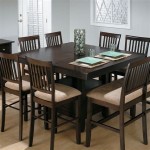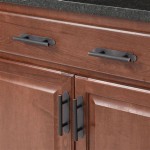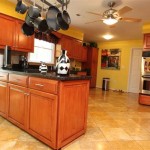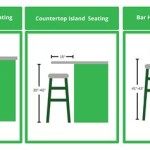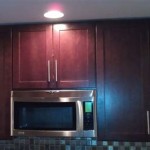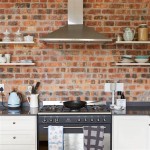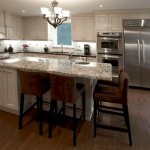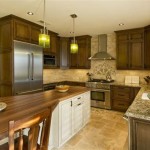Best Under Cabinet Lights For Kitchen
Under cabinet lighting significantly enhances kitchen functionality and aesthetics. These lights illuminate countertops, making tasks like chopping, mixing, and reading recipes easier. They also contribute to creating a warm, inviting ambiance. Selecting the best under cabinet lights involves considering various factors, including light source, power source, installation method, and desired features.
Types of Under Cabinet Lighting
Several types of under cabinet lighting are available, each offering distinct advantages and disadvantages. Understanding these differences is crucial for selecting the optimal lighting solution for a specific kitchen.
LED (Light Emitting Diode) Lighting: LED lights are the most popular choice for under cabinet lighting due to their energy efficiency, long lifespan, and cool operation. They produce minimal heat, which is a significant advantage in a kitchen environment. LED fixtures are available in various color temperatures, allowing customization of the light's warmth or coolness. They also come in various form factors, including strips, pucks, and bars, offering flexibility in installation and design.
Halogen Lighting: Halogen lights offer a bright, white light that renders colors accurately. However, they are less energy-efficient than LEDs and generate significant heat. This heat can be a concern in enclosed spaces under cabinets and can potentially affect food items stored nearby. Halogen lights also have a shorter lifespan compared to LEDs, requiring more frequent replacements.
Xenon Lighting: Xenon lights are similar to halogen lights in terms of light quality but run slightly cooler and are more energy-efficient. They still produce more heat than LEDs and have a shorter lifespan. Xenon lights are less commonly used than LEDs or halogen lights for under cabinet applications.
Fluorescent Lighting: Fluorescent lights, particularly T5 and T8 tubes, were a common choice before the widespread adoption of LEDs. They are more energy-efficient than halogen or xenon but less efficient than LEDs. Fluorescent lights can also produce a flickering effect and may contain mercury, requiring special disposal procedures. Their larger size compared to LED options makes them less discreet for under cabinet placement.
Power Source Options
The power source for under cabinet lights impacts installation complexity and energy consumption. Three primary power source options exist.
Hardwired: Hardwired under cabinet lights are directly connected to the kitchen's electrical system. This method provides a clean, seamless look without visible cords. However, hardwired installation requires electrical expertise and may necessitate hiring a qualified electrician. This option is typically best for renovations or new construction where electrical wiring is being updated.
Plug-In: Plug-in under cabinet lights are the easiest to install, as they simply plug into a standard electrical outlet. This option is ideal for renters or homeowners who want a quick and simple lighting solution without permanent modifications. However, plug-in lights require a nearby outlet and may result in visible cords, which can detract from the overall aesthetic.
Battery-Powered: Battery-powered under cabinet lights offer the most flexibility in terms of placement, as they do not require access to an electrical outlet. These lights are typically powered by AA or AAA batteries and are often equipped with motion sensors or timers to conserve battery life. Battery-powered lights are suitable for areas where wiring is difficult or impractical, but the batteries will need to be replaced periodically.
Installation Methods and Considerations
The installation method influences the ease and permanence of the under cabinet lighting. Considerations include the mounting surface, wiring requirements, and desired level of customization.
Direct Mount: Direct mount fixtures are attached directly to the underside of the cabinet using screws or adhesive. This method provides a secure and permanent installation. However, it may require drilling holes in the cabinets, which can be a concern for some homeowners. Direct mount fixtures are often used for hardwired or plug-in lights.
Strip Lighting: LED strip lights are flexible and can be easily installed using adhesive backing. They are ideal for illuminating long stretches of countertop and can be cut to size to fit specific spaces. Strip lighting is versatile and can be used for both functional and decorative purposes. However, the adhesive may weaken over time, requiring occasional readjustment or replacement.
Puck Lights: Puck lights are small, round fixtures that can be mounted using screws or adhesive. They are often used for accent lighting or to highlight specific areas under the cabinets. Puck lights are available in various sizes and styles, allowing for customization. They are a good option for adding focused light to specific task areas.
Light Bars: Light bars are linear fixtures that provide a more uniform distribution of light compared to puck lights. They are typically mounted using screws or clips and are available in various lengths. Light bars are a good choice for providing even illumination across the entire countertop.
Choosing the Right Light Source Characteristics
Beyond the type of light source, specific characteristics affect the final lighting effect and user experience. These include brightness, color temperature, and dimmability.
Brightness (Lumens): Brightness is measured in lumens. The appropriate lumen output depends on the size of the kitchen and the desired level of illumination. For task lighting, a higher lumen output is generally recommended. A general guideline is to aim for around 300-400 lumens per foot of countertop. Adjustments may need to be made based on personal preference and the reflectivity of the countertop material.
Color Temperature (Kelvin): Color temperature is measured in Kelvin (K) and indicates the warmth or coolness of the light. Lower Kelvin values (e.g., 2700K-3000K) produce a warm, yellowish light, while higher Kelvin values (e.g., 4000K-5000K) produce a cool, bluish-white light. Warm light is often preferred for creating a cozy ambiance, while cool light is better for task lighting as it provides better visibility. A color temperature of around 3000K-4000K is often a good compromise for kitchens.
Dimmability: Dimmable under cabinet lights allow users to adjust the light intensity to suit different tasks and moods. Dimmability can be achieved using a dimmer switch or through integrated controls in the lighting fixture. Dimmable lights provide flexibility and can help conserve energy by reducing light output when full brightness is not needed. Compatibility between the dimmer switch and the lighting fixture is crucial for proper operation.
Smart Lighting Features
Modern under cabinet lighting options often incorporate smart features for enhanced control and convenience. These features typically require a Wi-Fi connection and compatible smart home devices.
Voice Control: Voice-controlled under cabinet lights can be operated using voice commands through smart home assistants like Amazon Alexa or Google Assistant. This feature allows for hands-free operation and integration with other smart home devices.
App Control: App-controlled under cabinet lights can be managed through a smartphone app. The app allows users to adjust brightness, color temperature, set schedules, and create custom lighting scenes. App control provides a convenient and intuitive way to manage the lighting system.
Motion Sensors: Motion sensors automatically turn the lights on when movement is detected. This feature is useful for hands-free operation and can help conserve energy by turning off the lights when the area is unoccupied. Motion sensors are particularly helpful for quick tasks or navigating the kitchen at night.
Aesthetic Considerations
Under cabinet lighting not only improves functionality but also contributes to the overall aesthetic of the kitchen. The style and finish of the fixtures should complement the existing cabinetry and décor.
Fixture Style: Under cabinet lights are available in various styles, ranging from sleek and modern to traditional and ornate. The choice of style depends on the overall design of the kitchen. For a modern kitchen, minimal and streamlined fixtures are often preferred. For a traditional kitchen, fixtures with more detail and embellishments may be more appropriate.
Finish: The finish of the under cabinet lights should match or complement the hardware and fixtures in the kitchen. Common finishes include stainless steel, brushed nickel, chrome, and white. The finish should be durable and resistant to scratches and corrosion.
Light Placement: The placement of the under cabinet lights is crucial for achieving optimal illumination and visual appeal. The lights should be positioned to provide even coverage of the countertop without creating glare or shadows. Experimenting with different placements before installation can help determine the best configuration.
Energy Efficiency and Cost Savings
Selecting an energy-efficient under cabinet lighting solution can lead to significant cost savings over time. LED lights are the most energy-efficient option and can reduce electricity consumption compared to halogen, xenon, or fluorescent lights.
LED Efficiency: LED lights consume significantly less energy than traditional light sources. They convert a higher percentage of electricity into light, with minimal energy wasted as heat. This translates to lower electricity bills and reduced carbon footprint.
Lifespan: LED lights have a much longer lifespan than other types of lights. They can last for tens of thousands of hours, reducing the need for frequent replacements. This not only saves money on replacement bulbs but also reduces the hassle of maintenance.
Dimming: Using dimmable under cabinet lights can further reduce energy consumption by adjusting the light intensity to suit different needs. Dimming the lights when full brightness is not required can significantly lower energy usage.

Best Under Cabinet Lighting Recommendations From Design Pros Aterra Designs

How To Choose The Best Under Cabinet Lighting For Your Kitchen Renovation Dakota Premium Hardwoods
Under Cabinet Led Lighting

Led Under Cabinet Lighting Solutions Armacost

The Best Under Cabinet Lighting Tested By Bob Vila

9 Best In Cabinet Lighting Options And Ideas Angi

The Best Color Temperature For Under Cabinet Lighting Warm Vs Cool Lumaz

Best Led Under Cabinet Lighting For Kitchen Upshine

9 Best In Cabinet Lighting Options And Ideas Angi

The Best Under Cabinet Lighting Ideas For Your New Kitchen

